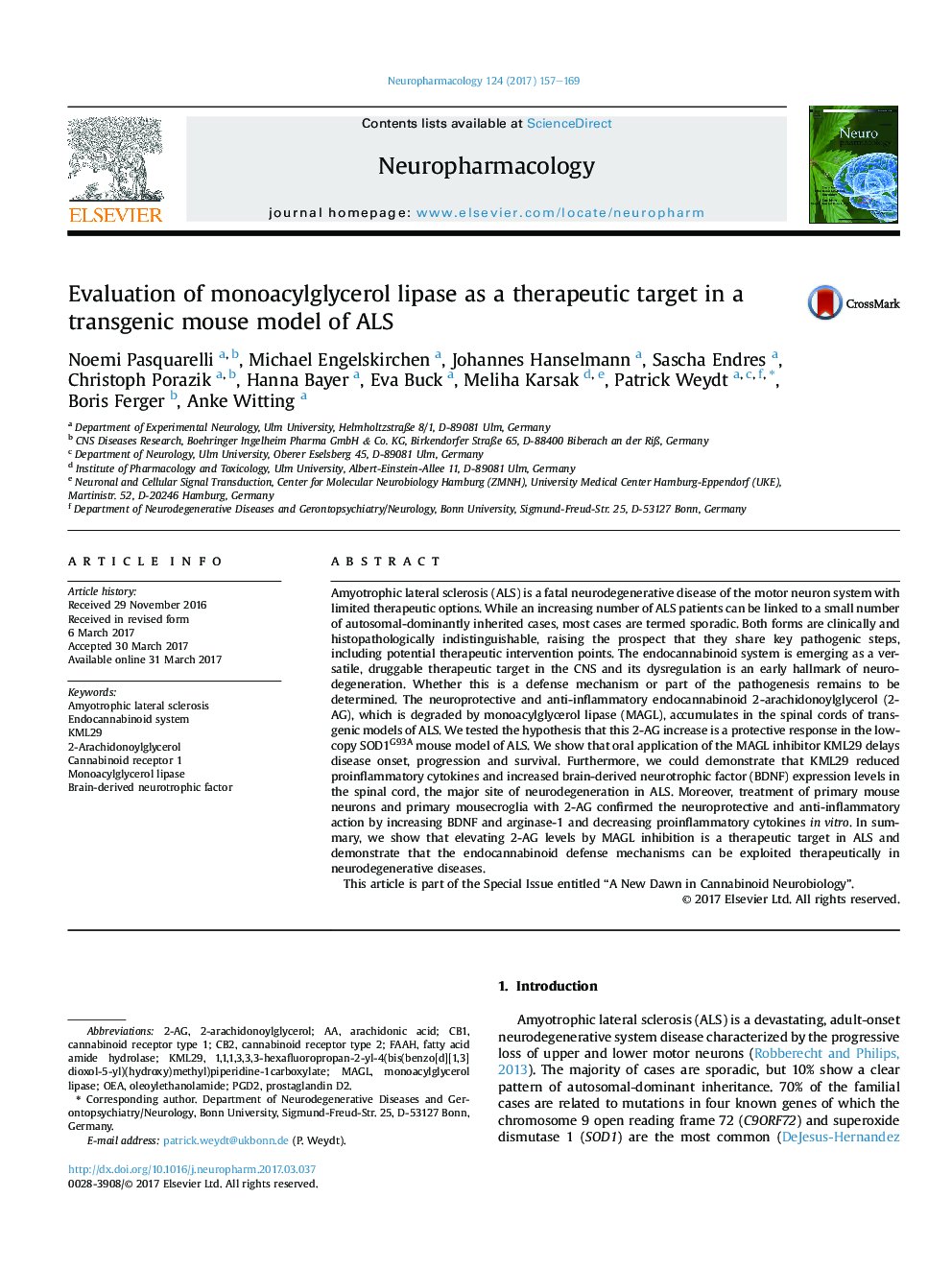| کد مقاله | کد نشریه | سال انتشار | مقاله انگلیسی | نسخه تمام متن |
|---|---|---|---|---|
| 5548746 | 1556593 | 2017 | 13 صفحه PDF | دانلود رایگان |

- KML29 delays onset, progression and survival in the low-copy SOD1G93A ALS mouse.
- KML29 reduces cytokine and increased BDNF expression in the spinal cord.
- 2-AG increases BDNF and arginase-1 and decreases proinflammatory cytokines in vitro.
- In summary, elevating 2-AG levels by MAGL inhibition represents a therapeutic target in ALS.
Amyotrophic lateral sclerosis (ALS) is a fatal neurodegenerative disease of the motor neuron system with limited therapeutic options. While an increasing number of ALS patients can be linked to a small number of autosomal-dominantly inherited cases, most cases are termed sporadic. Both forms are clinically and histopathologically indistinguishable, raising the prospect that they share key pathogenic steps, including potential therapeutic intervention points. The endocannabinoid system is emerging as a versatile, druggable therapeutic target in the CNS and its dysregulation is an early hallmark of neurodegeneration. Whether this is a defense mechanism or part of the pathogenesis remains to be determined. The neuroprotective and anti-inflammatory endocannabinoid 2-arachidonoylglycerol (2-AG), which is degraded by monoacylglycerol lipase (MAGL), accumulates in the spinal cords of transgenic models of ALS. We tested the hypothesis that this 2-AG increase is a protective response in the low-copy SOD1G93A mouse model of ALS. We show that oral application of the MAGL inhibitor KML29 delays disease onset, progression and survival. Furthermore, we could demonstrate that KML29 reduced proinflammatory cytokines and increased brain-derived neurotrophic factor (BDNF) expression levels in the spinal cord, the major site of neurodegeneration in ALS. Moreover, treatment of primary mouse neurons and primary mousecroglia with 2-AG confirmed the neuroprotective and anti-inflammatory action by increasing BDNF and arginase-1 and decreasing proinflammatory cytokines in vitro. In summary, we show that elevating 2-AG levels by MAGL inhibition is a therapeutic target in ALS and demonstrate that the endocannabinoid defense mechanisms can be exploited therapeutically in neurodegenerative diseases.This article is part of the Special Issue entitled “A New Dawn in Cannabinoid Neurobiology”.
Journal: Neuropharmacology - Volume 124, 15 September 2017, Pages 157-169